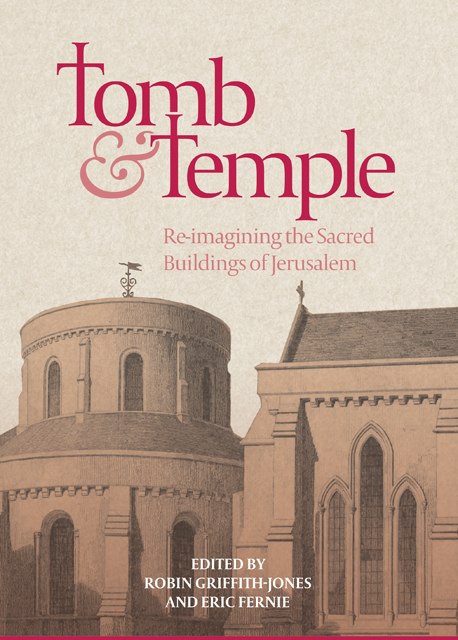Book contents
- Frontmatter
- Contents
- Illustrations
- Preface
- Contributors
- Abbreviations
- Editors’ Note
- Introduction
- Part I Re-presenting Jerusalem
- Part II The Church of the Holy Sepulchre
- Part III The Noble Sanctuary / The Temple Mount
- Part IV The Orthodox Churches
- Part V Round Churches in the West
- Appendix: The Knights’ Effigies: Newly Discovered Drawings by John Guillim, c. 1610
- Epilogue
- Index
- Already Published
8 - Raphael’s ‘Marriage of the Virgin’ and the Temple at Jerusalem in the Italian Renaissance Imagination
Published online by Cambridge University Press: 17 January 2023
- Frontmatter
- Contents
- Illustrations
- Preface
- Contributors
- Abbreviations
- Editors’ Note
- Introduction
- Part I Re-presenting Jerusalem
- Part II The Church of the Holy Sepulchre
- Part III The Noble Sanctuary / The Temple Mount
- Part IV The Orthodox Churches
- Part V Round Churches in the West
- Appendix: The Knights’ Effigies: Newly Discovered Drawings by John Guillim, c. 1610
- Epilogue
- Index
- Already Published
Summary
In this short chapter on the Temple at Jerusalem in the Italian Renaissance imagination, I will principally be confining my investigation to the period that stretches from Giotto and Duccio in the first years of the fourteenth century to Raphael and his Marriage of the Virgin, now in the Brera in Milan but painted for Città di Castello, which is signed and dated 1504 [Fig. 8.1]. For reasons of space, I will not be discussing the Temple’s appearance in Italian Renaissance narrative sculpture. This is the great period for representations of religious subjects in which the Temple either must or can play a starring role. The number of them is limited, and their relative frequency is very unequal, simply because some subjects were so much more popular within the visual tradition than others. In theory, they might include scenes from the Old Testament, but in practice they tend to be confined to episodes from the New Testament or from the apocryphal legends associated with it.
In chronological order, the main ones are the Presentation of the Virgin, the Marriage of the Virgin, the Presentation of Christ, Christ among the Doctors, the Temptation of Christ, and the Expulsion of the Money-Changers. Naturally, the Temple also tends to feature prominently – if on a necessarily smaller scale – in more distant prospects of the city, most obviously in representations of Christ’s entry into Jerusalem. Moreover, it is worth adding that on occasion Temple-type buildings are also included in other scenes. The most striking case in point, which will be more fully discussed below, is Perugino’s fresco in the Sistine Chapel of Christ Giving the Keys to Saint Peter [Fig. 8.7, p. 176 below]. There seems no reason to suppose that a Renaissance artist like Perugino would have found the requirement to illustrate this narrative episode at all odd, although it is not precisely recorded in the New Testament. The justification for it is only found in Matt. 16.19, where Christ’s words to Peter are: ‘And I will give unto thee the keys of the kingdom of heaven: and whatsoever thou shalt bind on earth shall be bound in heaven: and whatsoever thou shalt loose on earth shall be loosed in heaven.’
- Type
- Chapter
- Information
- Tomb and TempleRe-imagining the Sacred Buildings of Jerusalem, pp. 164 - 180Publisher: Boydell & BrewerPrint publication year: 2018

